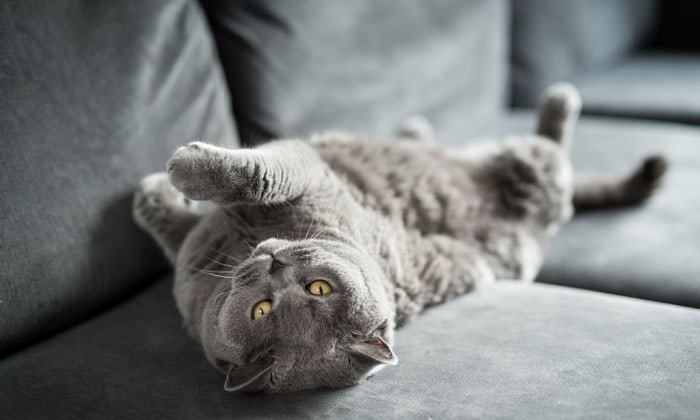Calming a cat in heat:Effective Strategies and Tips
Introduction
Cats in heat can exhibit restless and agitated behavior, making it a challenging time for both the cat and its owner. Understanding how to calm a cat in heat is essential to ensure their well-being and maintain a harmonious environment. In this article, we will explore effective strategies and tips to help soothe your cat during this phase, ensuring their comfort and reducing any potential stress or discomfort.
Understanding Heat Cycles in Cats
Cats are seasonally polyestrous, which means they go through heat cycles multiple times a year. These cycles are influenced by various factors, including the amount of daylight, temperature, and the presence of other cats. A cat’s heat cycle typically lasts for four to ten days and repeats every two to three weeks until she becomes pregnant or is spayed.
Signs and Symptoms of a Cat in Heat
Recognizing the signs and symptoms of a cat in heat is crucial to identifying their state and addressing their needs appropriately. Common signs include excessive vocalization, restlessness, increased affection, rolling on the floor, and an increased appetite. Cats in heat may also display behaviors like rubbing against objects or people and assuming a mating posture.
Why It’s Important to Calm a Cat in Heat (Calming a cat in heat)
Calming a cat in heat is essential for several reasons. Firstly, it helps maintain a peaceful environment for both the cat and the household. Unaddressed heat cycles can lead to stress, aggression, and disruptive behavior. Secondly, reducing a cat’s anxiety during this period can prevent her from attempting to escape outdoors, which could result in unwanted pregnancy or exposure to potential dangers.
Precautions and Safety Measures
Before implementing calming strategies, it’s important to take certain precautions and ensure the safety of your cat. Firstly, ensure your cat is healthy and free from any underlying medical conditions. If your cat’s heat cycles are excessively frequent or prolonged, consult a veterinarian. Additionally, keep your cat indoors to prevent potential mating or accidents. Always approach your cat gently and cautiously to avoid startling or provoking her.
Effective Strategies to Calm a Cat in Heat
- Providing a Safe and Comfortable Environment: Create a calm and secure space for your cat by providing a comfortable bed, hiding spots, and elevated surfaces. This allows your cat to retreat and relax when needed.
- Distraction and Play: Engage your cat in interactive play sessions using toys that mimic prey. This helps redirect her attention and energy away from mating instincts, providing mental and physical stimulation.
- Using Calming Products: Utilize pheromone diffusers, sprays, or collars designed specifically for cats. These products release calming scents that mimic the natural pheromones produced by mother cats, promoting a sense of security and relaxation.
- Gentle Massage and Petting: Gently stroking your cat can help alleviate her stress and provide comfort. Focus on areas she enjoys being touched, such as the chin, cheeks, and the base of the tail. Avoid touching her lower back, as it can be sensitive during this period.
- Promoting Physical and Mental Stimulation: Engage your cat in regular exercise and play to help reduce restlessness and anxiety. Provide scratching posts, puzzle toys, and opportunities for climbing to keep her physically and mentally stimulated.
- Seeking Veterinary Assistance: If your cat’s behavior or discomfort persists despite your efforts, consult a veterinarian. They can provide further guidance, prescribe medication if necessary, or suggest alternative approaches to calm your cat.
Common Mistakes to Avoid
While trying to calm a cat in heat, it’s important to avoid certain mistakes that can inadvertently worsen their stress or discomfort. Avoid punishing or scolding your cat for her behavior, as it can cause further anxiety. Refrain from introducing potential mates or allowing contact with intact male cats, as it can intensify her agitation. Lastly, resist the urge to spay your cat during her heat cycle, as it increases the risk of complications.
Conclusion
Calmly addressing a cat’s heat cycle is vital for their well-being and maintaining a peaceful household. By understanding the signs, implementing effective strategies, and taking necessary precautions, you can help soothe your cat during this period. Remember to create a safe environment, provide mental and physical stimulation, and seek veterinary assistance if needed. With patience and care, you can navigate through your cat’s heat cycles and ensure their comfort.
FAQs
1. Can I spay my cat while she is in heat?
Spaying a cat during her heat cycle is generally not recommended, as it increases the risk of complications. It is best to wait until she has completed her heat cycle before scheduling the spay surgery.
2. How long does a cat’s heat cycle last?
A cat’s heat cycle typically lasts for four to ten days. However, it can vary between individual cats.
3. Will calming products definitely help calm my cat in heat?
Calming products such as pheromone diffusers and sprays can be helpful in creating a sense of relaxation for your cat. However, the effectiveness may vary between cats, so it’s important to monitor your cat’s response and consult a veterinarian if needed.
4. Should I let my cat outside during her heat cycle?
It is generally recommended to keep your cat indoors during her heat cycle to prevent unwanted pregnancy, exposure to potential dangers, and the attraction of male cats.
5. What if my cat’s heat cycles are unusually frequent or prolonged?
If you notice that your cat’s heat cycles are excessively frequent or prolonged, it’s advisable to consult a veterinarian. They can evaluate your cat’s health and provide appropriate guidance or treatment options.
Read More:Comforting Sick Cat: Tips for Providing Comfort and Care




